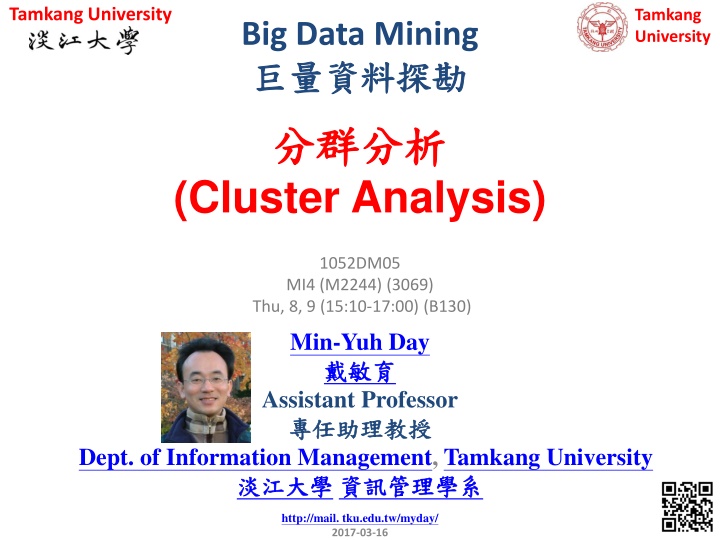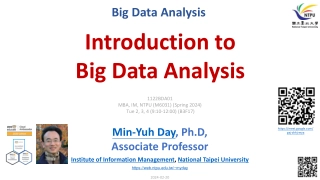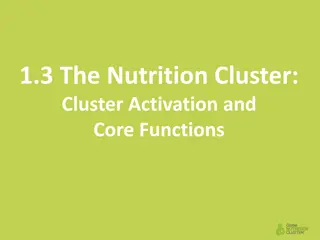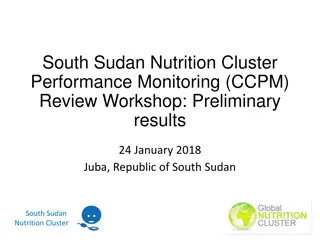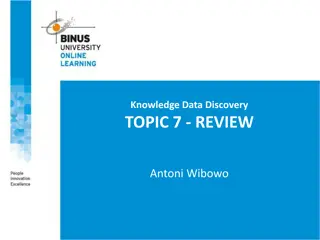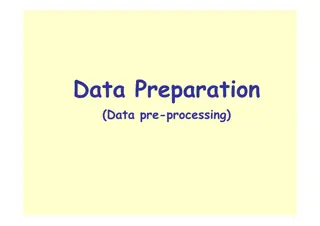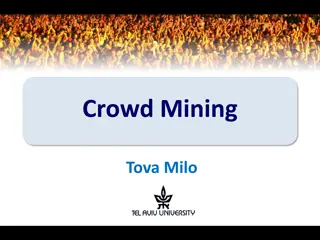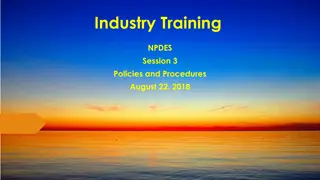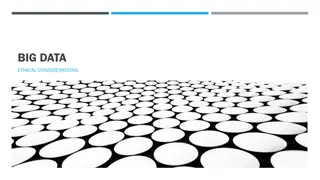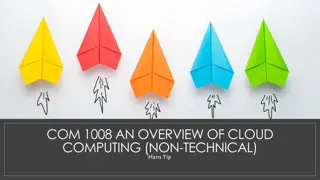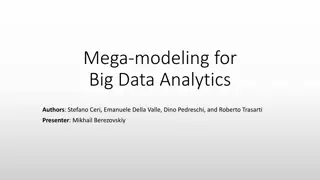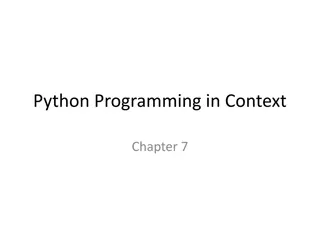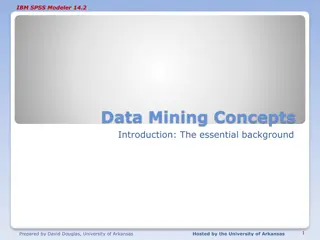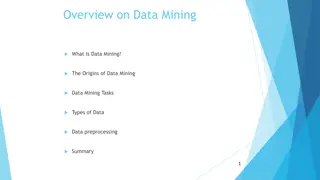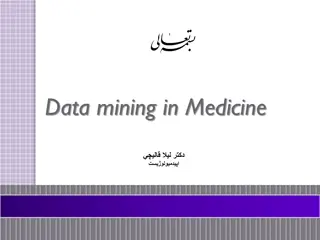Big Data Mining and Cluster Analysis at Tamkang University
Delve into the world of big data mining and cluster analysis in the academic setting of Tamkang University, exploring topics such as MapReduce, Hadoop, Spark, and SAS. Uncover a taxonomy of data mining tasks, including popular algorithms for classification, prediction, and clustering. Gain insights from case studies and examples in the realm of data analysis and machine learning.
Download Presentation

Please find below an Image/Link to download the presentation.
The content on the website is provided AS IS for your information and personal use only. It may not be sold, licensed, or shared on other websites without obtaining consent from the author.If you encounter any issues during the download, it is possible that the publisher has removed the file from their server.
You are allowed to download the files provided on this website for personal or commercial use, subject to the condition that they are used lawfully. All files are the property of their respective owners.
The content on the website is provided AS IS for your information and personal use only. It may not be sold, licensed, or shared on other websites without obtaining consent from the author.
E N D
Presentation Transcript
Tamkang University Tamkang University Big Data Mining (Cluster Analysis) 1052DM05 MI4 (M2244) (3069) Thu, 8, 9 (15:10-17:00) (B130) Min-Yuh Day Assistant Professor Dept. of Information Management, Tamkang University http://mail. tku.edu.tw/myday/ 2017-03-16 1
(Syllabus) (Week) (Date) (Subject/Topics) 1 2017/02/16 (Course Orientation for Big Data Mining) 2 2017/02/23 MapReduce Hadoop Spark (Fundamental Big Data: MapReduce Paradigm, Hadoop and Spark Ecosystem) 3 2017/03/02 (Association Analysis) 4 2017/03/09 (Classification and Prediction) 5 2017/03/16 (Cluster Analysis) 6 2017/03/23 (SAS EM ) Case Study 1 (Cluster Analysis K-Means using SAS EM) 7 2017/03/30 (SAS EM ) Case Study 2 (Association Analysis using SAS EM) 2
(Syllabus) (Week) (Date) (Subject/Topics) 8 2017/04/06 (Off-campus study) 9 2017/04/13 (Midterm Project Presentation) 10 2017/04/20 (Midterm Exam) 11 2017/04/27 (SAS EM ) Case Study 3 (Decision Tree, Model Evaluation using SAS EM) 12 2017/05/04 (SAS EM ) Case Study 4 (Regression Analysis, Artificial Neural Network using SAS EM) 13 2017/05/11 Google TensorFlow (Deep Learning with Google TensorFlow) 14 2017/05/18 (Final Project Presentation) 15 2017/05/25 (Final Exam) 3
Outline Cluster Analysis K-Means Clustering 4
A Taxonomy for Data Mining Tasks Data Mining Learning Method Popular Algorithms Classification and Regression Trees, ANN, SVM, Genetic Algorithms Prediction Supervised Decision trees, ANN/MLP, SVM, Rough sets, Genetic Algorithms Classification Supervised Linear/Nonlinear Regression, Regression trees, ANN/MLP, SVM Regression Supervised Association Unsupervised Apriory, OneR, ZeroR, Eclat Expectation Maximization, Apriory Algorithm, Graph-based Matching Link analysis Unsupervised Sequence analysis Unsupervised Apriory Algorithm, FP-Growth technique Clustering Unsupervised K-means, ANN/SOM Outlier analysis Unsupervised K-means, Expectation Maximization (EM) Source: Turban et al. (2011), Decision Support and Business Intelligence Systems 5
Example of Cluster Analysis Point p01 p02 p03 p04 p05 p06 p07 p08 p09 p10 P a b c d e f g h i j P(x,y) (3, 4) (3, 6) (3, 8) (4, 5) (4, 7) (5, 1) (5, 5) (7, 3) (7, 5) (8, 5) 6
K-Means Clustering m1 m2 Point p01 p02 p03 p04 p05 p06 p07 p08 p09 p10 P a b c d e f g h i j P(x,y) (3, 4) (3, 6) (3, 8) (4, 5) (4, 7) (5, 1) (5, 5) (7, 3) (7, 5) (8, 5) Cluster Cluster1 Cluster1 Cluster1 Cluster1 Cluster1 Cluster2 Cluster1 Cluster2 Cluster2 Cluster2 distance 1.95 0.69 2.27 0.89 1.22 5.01 1.57 4.37 3.43 4.41 distance 3.78 4.51 5.86 3.13 4.45 3.05 2.30 0.56 1.52 1.95 m1 m2 (3.67, 5.83) (6.75, 3.50) 7
Cluster Analysis Used for automatic identification of natural groupings of things Part of the machine-learning family Employ unsupervised learning Learns the clusters of things from past data, then assigns new instances There is not an output variable Also known as segmentation Source: Turban et al. (2011), Decision Support and Business Intelligence Systems 9
Cluster Analysis Clustering of a set of objects based on the k-means method. (The mean of each cluster is marked by a + .) 10 Source: Han & Kamber (2006)
Cluster Analysis Clustering results may be used to Identify natural groupings of customers Identify rules for assigning new cases to classes for targeting/diagnostic purposes Provide characterization, definition, labeling of populations Decrease the size and complexity of problems for other data mining methods Identify outliers in a specific domain (e.g., rare-event detection) Source: Turban et al. (2011), Decision Support and Business Intelligence Systems 11
Example of Cluster Analysis 10 Point P p01 p02 p03 p04 p05 p06 p07 p08 p09 p10 P(x,y) (3, 4) (3, 6) (3, 8) (4, 5) (4, 7) (5, 1) (5, 5) (7, 3) (7, 5) (8, 5) a b c d e f g h i j 9 8 7 6 5 4 3 2 1 0 0 1 2 3 4 5 6 7 8 9 10 12
Cluster Analysis for Data Mining Analysis methods Statistical methods (including both hierarchical and nonhierarchical), such as k-means, k-modes, and so on Neural networks (adaptive resonance theory [ART], self-organizing map [SOM]) Fuzzy logic (e.g., fuzzy c-means algorithm) Genetic algorithms Divisive versus Agglomerative methods Source: Turban et al. (2011), Decision Support and Business Intelligence Systems 13
Cluster Analysis for Data Mining How many clusters? There is not a truly optimal way to calculate it Heuristics are often used 1. Look at the sparseness of clusters 2. Number of clusters = (n/2)1/2(n: no of data points) 3. Use Akaike information criterion (AIC) 4. Use Bayesian information criterion (BIC) Most cluster analysis methods involve the use of a distance measure to calculate the closeness between pairs of items Euclidian versus Manhattan (rectilinear) distance Source: Turban et al. (2011), Decision Support and Business Intelligence Systems 14
k-Means Clustering Algorithm k : pre-determined number of clusters Algorithm (Step 0: determine value of k) Step 1: Randomly generate k random points as initial cluster centers Step 2: Assign each point to the nearest cluster center Step 3: Re-compute the new cluster centers Repetition step: Repeat steps 2 and 3 until some convergence criterion is met (usually that the assignment of points to clusters becomes stable) Source: Turban et al. (2011), Decision Support and Business Intelligence Systems 15
Cluster Analysis for Data Mining - k-Means Clustering Algorithm Step 1 Step 2 Step 3 Source: Turban et al. (2011), Decision Support and Business Intelligence Systems 16
Similarity Distance 17
Similarity and Dissimilarity Between Objects Distances are normally used to measure the similarity or dissimilarity between two data objects Some popular ones include: Minkowski distance: q q q = + + + , ( ) (| | | | ... | | ) d i j x x x x x x q i j i j i j 1 1 2 2 p p where i = (xi1, xi2, , xip) and j = (xj1, xj2, , xjp) are two p- dimensional data objects, and q is a positive integer If q = 1, d is Manhattan distance = + + + , ( i d ) | | | | ... | | j ix x ix x ix x j j j 1 1 2 2 p p Source: Han & Kamber (2006) 18
Similarity and Dissimilarity Between Objects (Cont.) If q = 2, d is Euclidean distance: = + + + 2 2 2 , ( i d ) (| | | | ... | | ) j x x x x x x i j i j i j 1 1 2 2 p p Properties d(i,j) 0 d(i,i) = 0 d(i,j) = d(j,i) d(i,j) d(i,k) + d(k,j) Also, one can use weighted distance, parametric Pearson product moment correlation, or other disimilarity measures Source: Han & Kamber (2006) 19
Euclidean distance vs Manhattan distance Distance of two point x1= (1, 2) and x2(3, 5) Euclidean distance: = ((3-1)2 + (5-2)2 )1/2 = (22 + 32)1/2 = (4+ 9)1/2 = (13)1/2 = 3.61 x2(3, 5) 5 4 3.61 3 3 2 2 x1= (1, 2) Manhattan distance: = (3-1) + (5-2) = 2 + 3 = 5 1 1 2 3 20
The K-Means Clustering Method Example 10 10 10 9 9 9 8 8 8 7 7 7 6 6 6 5 5 4 5 4 Update the cluster means 3 4 Assign each objects to most similar center 3 2 3 2 1 2 1 0 1 0 1 2 3 4 5 6 7 8 9 10 0 0 0 1 2 3 4 5 6 7 8 9 10 0 1 2 3 4 5 6 7 8 9 10 reassign reassign 10 10 K=2 9 9 8 8 Arbitrarily choose K object as initial cluster center 7 7 6 6 5 5 Update the cluster means 4 4 3 3 2 2 1 1 0 0 0 1 2 3 4 5 6 7 8 9 10 0 1 2 3 4 5 6 7 8 9 10 Source: Han & Kamber (2006) 21
Example of Cluster Analysis Point p01 p02 p03 p04 p05 p06 p07 p08 p09 p10 P a b c d e f g h i j P(x,y) (3, 4) (3, 6) (3, 8) (4, 5) (4, 7) (5, 1) (5, 5) (7, 3) (7, 5) (8, 5) 23
K-Means Clustering Step by Step 10 Point P p01 p02 p03 p04 p05 p06 p07 p08 p09 p10 P(x,y) (3, 4) (3, 6) (3, 8) (4, 5) (4, 7) (5, 1) (5, 5) (7, 3) (7, 5) (8, 5) a b c d e f g h i j 9 8 7 6 5 4 3 2 1 0 0 1 2 3 4 5 6 7 8 9 10 24
K-Means Clustering Step 1: K=2, Arbitrarily choose K object as initial cluster center 10 Point P p01 p02 p03 p04 p05 p06 p07 p08 p09 p10 P(x,y) (3, 4) (3, 6) (3, 8) (4, 5) (4, 7) (5, 1) (5, 5) (7, 3) (7, 5) (8, 5) a b c d e f g h i j 9 8 7 6 M2= (8, 5) 5 4 m1= (3, 4) 3 2 Initial m1 Initial m2 (3, 4) (8, 5) 1 0 0 1 2 3 4 5 6 7 8 9 10 25
Step 2: Compute seed points as the centroids of the clusters of the current partition Step 3: Assign each objects to most similar center m1 m2 Point P P(x,y) Cluster distance 0.00 2.00 4.00 1.41 3.16 3.61 2.24 4.12 4.12 5.10 distance 5.10 5.10 5.83 4.00 4.47 5.00 3.00 2.24 1.00 0.00 10 p01 p02 p03 p04 p05 p06 p07 p08 p09 p10 a b c d e f g h i j (3, 4) (3, 6) (3, 8) (4, 5) (4, 7) (5, 1) (5, 5) (7, 3) (7, 5) (8, 5) Cluster1 Cluster1 Cluster1 Cluster1 Cluster1 Cluster1 Cluster1 Cluster2 Cluster2 Cluster2 9 8 7 M2= (8, 5) 6 5 4 m1= (3, 4) 3 2 1 0 0 1 2 3 4 5 6 7 8 9 10 Initial m1 (3, 4) Initial m2 (8, 5) K-Means Clustering 26
Step 2: Compute seed points as the centroids of the clusters of the current partition Step 3: Assign each objects to most similar center m1 m2 Point P P(x,y) Cluster distance 0.00 2.00 4.00 1.41 3.16 3.61 2.24 4.12 4.12 5.10 distance 5.10 5.10 5.83 4.00 4.47 5.00 3.00 2.24 1.00 0.00 10 p01 p02 p03 p04 p05 p06 p07 p08 p09 p10 a b c d e f g h i j (3, 4) (3, 6) (3, 8) (4, 5) (4, 7) (5, 1) (5, 5) (7, 3) (7, 5) (8, 5) Cluster1 Cluster1 Cluster1 Cluster1 Cluster1 Cluster1 Cluster1 Cluster2 Cluster2 Cluster2 9 8 7 M2= (8, 5) 6 Euclidean distance b(3,6) m2(8,5) = ((8-3)2 + (5-6)2 )1/2 = (52 + (-1)2)1/2 = (25+ 1)1/2 = (26)1/2 = 5.10 5 4 m1= (3, 4) Euclidean distance b(3,6) m1(3,4) = ((3-3)2 + (4-6)2 )1/2 = (02 + (-2)2)1/2 = (0+ 4)1/2 = (4)1/2 = 2.00 3 2 1 0 0 1 2 3 4 5 6 7 8 9 10 Initial m1 (3, 4) Initial m2 (8, 5) K-Means Clustering 27
Step 4: Update the cluster means, Repeat Step 2, 3, stop when no more new assignment m1 m2 Point P P(x,y) Cluster distance distance 10 p01 p02 p03 p04 p05 p06 p07 p08 p09 p10 a b c d e f g h i j (3, 4) 1.43 (3, 6) 1.22 (3, 8) 2.99 (4, 5) 0.20 (4, 7) 1.87 (5, 1) 4.29 (5, 5) 1.15 (7, 3) 3.80 (7, 5) 3.14 (8, 5) 4.14 4.34 Cluster1 4.64 Cluster1 5.68 Cluster1 3.40 Cluster1 4.27 Cluster1 4.06 Cluster2 2.42 Cluster1 1.37 Cluster2 0.75 Cluster2 0.95 Cluster2 9 8 7 m1= (3.86, 5.14) 6 5 M2= (7.33, 4.33) 4 3 2 1 0 0 1 2 3 4 5 6 7 8 9 10 m1 (3.86, 5.14) m2 (7.33, 4.33) K-Means Clustering 28
Step 4: Update the cluster means, Repeat Step 2, 3, stop when no more new assignment m1 m2 Point P P(x,y) Cluster distance distance 10 p01 p02 p03 p04 p05 p06 p07 p08 p09 p10 a b c d e f g h i j (3, 4) 1.95 (3, 6) 0.69 (3, 8) 2.27 (4, 5) 0.89 (4, 7) 1.22 (5, 1) 5.01 (5, 5) 1.57 (7, 3) 4.37 (7, 5) 3.43 (8, 5) 4.41 3.78 Cluster1 4.51 Cluster1 5.86 Cluster1 3.13 Cluster1 4.45 Cluster1 3.05 Cluster2 2.30 Cluster1 0.56 Cluster2 1.52 Cluster2 1.95 Cluster2 9 8 7 m1= (3.67, 5.83) 6 5 M2= (6.75., 3.50) 4 3 2 1 0 0 1 2 3 4 5 6 7 8 9 10 m1 (3.67, 5.83) m2 (6.75, 3.50) K-Means Clustering 29
m1 m2 stop when no more new assignment Point P P(x,y) Cluster distance distance 10 p01 p02 p03 p04 p05 p06 p07 p08 p09 p10 a b c d e f g h i j (3, 4) 1.95 (3, 6) 0.69 (3, 8) 2.27 (4, 5) 0.89 (4, 7) 1.22 (5, 1) 5.01 (5, 5) 1.57 (7, 3) 4.37 (7, 5) 3.43 (8, 5) 4.41 3.78 Cluster1 4.51 Cluster1 5.86 Cluster1 3.13 Cluster1 4.45 Cluster1 3.05 Cluster2 2.30 Cluster1 0.56 Cluster2 1.52 Cluster2 1.95 Cluster2 9 8 7 6 5 4 3 2 1 0 0 1 2 3 4 5 6 7 8 9 10 m1 (3.67, 5.83) m2 (6.75, 3.50) K-Means Clustering 30
K-Means Clustering (K=2, two clusters) m1 m2 stop when no more new assignment Point P P(x,y) Cluster distance distance 10 p01 p02 p03 p04 p05 p06 p07 p08 p09 p10 a b c d e f g h i j (3, 4) 1.95 (3, 6) 0.69 (3, 8) 2.27 (4, 5) 0.89 (4, 7) 1.22 (5, 1) 5.01 (5, 5) 1.57 (7, 3) 4.37 (7, 5) 3.43 (8, 5) 4.41 3.78 Cluster1 4.51 Cluster1 5.86 Cluster1 3.13 Cluster1 4.45 Cluster1 3.05 Cluster2 2.30 Cluster1 0.56 Cluster2 1.52 Cluster2 1.95 Cluster2 9 8 7 6 5 4 3 2 1 0 0 1 2 3 4 5 6 7 8 9 10 m1 (3.67, 5.83) m2 (6.75, 3.50) K-Means Clustering 31
K-Means Clustering m1 m2 Point p01 p02 p03 p04 p05 p06 p07 p08 p09 p10 P a b c d e f g h i j P(x,y) (3, 4) (3, 6) (3, 8) (4, 5) (4, 7) (5, 1) (5, 5) (7, 3) (7, 5) (8, 5) Cluster Cluster1 Cluster1 Cluster1 Cluster1 Cluster1 Cluster2 Cluster1 Cluster2 Cluster2 Cluster2 distance 1.95 0.69 2.27 0.89 1.22 5.01 1.57 4.37 3.43 4.41 distance 3.78 4.51 5.86 3.13 4.45 3.05 2.30 0.56 1.52 1.95 m1 m2 (3.67, 5.83) (6.75, 3.50) 32
Summary Cluster Analysis K-Means Clustering 33
References Jiawei Han and Micheline Kamber, Data Mining: Concepts and Techniques, Second Edition, Elsevier, 2006. Jiawei Han, Micheline Kamber and Jian Pei, Data Mining: Concepts and Techniques, Third Edition, Morgan Kaufmann 2011. Efraim Turban, Ramesh Sharda, Dursun Delen, Decision Support and Business Intelligence Systems, Ninth Edition, Pearson, 2011. 34
